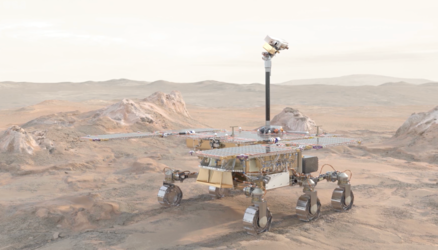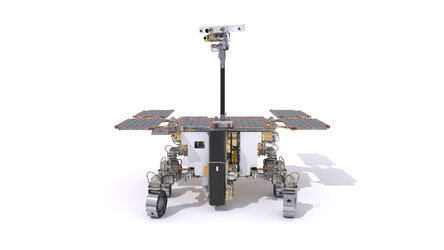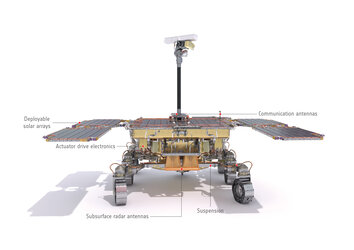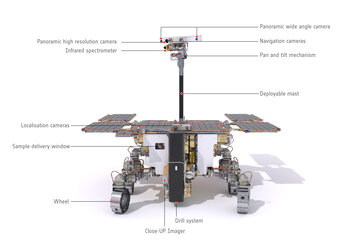
Episode 1 – Scouting the Red Planet
Watch the first episode of the ExoMars Rosalind Franklin rover mission – Europe’s ambitious exploration journey to search for past and present signs of life on Mars.
This episode starts after a successful descent and landing on the Red Planet in 2030.
Rovers on Mars have previously been caught in loose soils, and turning the wheels dug them deeper, just like a car stuck in sand. To avoid this, Rosalind Franklin has a unique wheel-walking locomotion mode to to overcome difficult terrains, as well as autonomous navigation software.
A major goal of the mission is to understand the geological context and identify minerals formed in the presence of water that could be good targets for drilling into and collecting samples for analysis.
The scientific eyes of the rover are set atop the mast on the Panoramic Camera suite, known as PanCam. From its vantage point about two metres above the ground, PanCam cameras come into play to get a whole picture of the site with high resolution imaging.
Enfys, meaning rainbow in Welsh, is an infrared spectrometer to study mineral composition. Enfys and PanCam work in synergy. PanCam is used to obtain colour, visual information of what lies around the rover. Enfys’ job is to inform scientists what the minerals are.
Rosalind Franklin will be the first rover to reach a depth of up to two metres deep below the surface, acquiring samples that have been protected from surface radiation and extreme temperatures.
The mission will serve to demonstrate key technologies that Europe needs to master for future planetary exploration missions.
This episode shows the spacecraft, the rover and martian landscapes are as true to reality as possible for a simulation.
Check ESA’s ExoMars website and our frequently asked questions for the latest updates.
Credits:
Production: Mlabspace for ESA
3D animation: ESA/Mlabspace
Video footage: ESA/NASA, Shutterstock
Music composed by Valentin Joudrier
Watch all the videos from the ExoMars Rosalind Frankin mission series.






